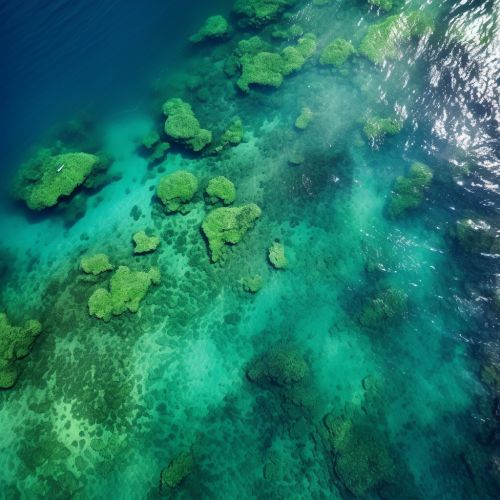The Chemistry of Ocean Fertilization and Its Potential in Climate Mitigation
Introduction
Ocean fertilization is a form of geoengineering that involves the introduction of nutrients, primarily iron, to the upper ocean to stimulate a phytoplankton bloom. This process aims to enhance biological productivity, particularly in areas where nutrient levels are low, and subsequently increase the ocean's capacity to absorb carbon dioxide (CO2) from the atmosphere. The concept of ocean fertilization has been proposed as a potential strategy for climate mitigation, given the crucial role of the ocean in the global carbon cycle.


Chemistry of Ocean Fertilization
Ocean fertilization involves the chemical process of photosynthesis, where phytoplankton, microscopic marine plants, convert CO2, water, and sunlight into oxygen and organic matter. This process is facilitated by the presence of nutrients, such as iron, which is often the limiting factor in marine productivity in high-nutrient, low-chlorophyll (HNLC) regions.
The addition of iron to these regions can stimulate a phytoplankton bloom, which can increase the ocean's capacity to absorb CO2 from the atmosphere. This is because the photosynthetic process of phytoplankton involves the uptake of CO2, which is then converted into organic carbon and oxygen. The organic carbon is either consumed by other marine organisms or sinks to the deep ocean, where it is sequestered for centuries to millennia. This process is known as the biological pump.
Potential in Climate Mitigation
The potential of ocean fertilization in climate mitigation lies in its ability to enhance the ocean's capacity to sequester CO2. By stimulating phytoplankton blooms, the process increases the amount of CO2 that can be converted into organic carbon and subsequently sequestered in the deep ocean. This could potentially help offset anthropogenic CO2 emissions and mitigate global warming.
However, the effectiveness of ocean fertilization as a climate mitigation strategy is still under debate. While some studies have shown that iron fertilization can stimulate significant phytoplankton blooms, others have raised concerns about the efficiency of carbon sequestration and potential ecological impacts.
Challenges and Controversies
There are several challenges and controversies associated with ocean fertilization. One of the main concerns is the efficiency of carbon sequestration. Not all the carbon absorbed by phytoplankton is sequestered in the deep ocean; a significant portion is recycled in the upper ocean and can be released back into the atmosphere.
There are also potential ecological impacts. Phytoplankton blooms can lead to eutrophication, which can cause oxygen depletion and harm marine life. Additionally, some types of phytoplankton, such as certain species of diatoms, can produce toxins that can harm marine organisms.
Moreover, the long-term effects of ocean fertilization are still largely unknown. While it may potentially help mitigate climate change, it could also have unforeseen consequences on marine ecosystems and the global carbon cycle.
Conclusion
Ocean fertilization is a complex and controversial strategy for climate mitigation. While it has the potential to enhance the ocean's capacity to sequester CO2 and help offset anthropogenic emissions, there are significant challenges and uncertainties associated with its implementation. Further research is needed to fully understand the implications of ocean fertilization on marine ecosystems and the global carbon cycle.
